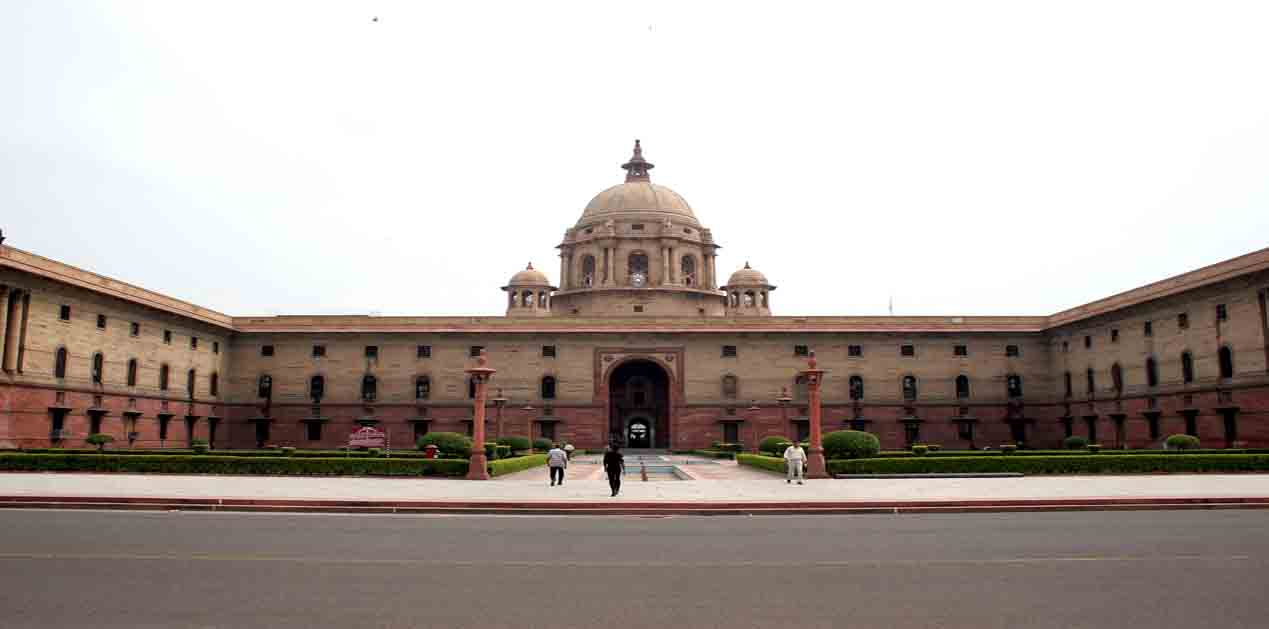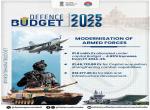Recently, the Ministry of Defence (MoD) has constituted a Defence Planning Committee (DPC) chaired by the National Security Advisor (NSA) with the objectives of: (1) Drafting a national security strategy; (2) drawing up a capability development plan; (3) working on defence diplomacy; and (4) improving defence manufacturing in India. Sub-committees are to be constituted for each of the subject matters above and the Committee will include the representatives of the Ministries of Finance (MoF) and External Affairs (MEA).
One wonders why such a committee is necessary in the first place when there is a full-fledged body, namely the National Security Council (NSC) and its Secretariat which can easily be tasked by the Government to draw up the National Security Strategy. A National Security Strategy has to be very comprehensive with defence strategy as a very important sub-set of that. It has to touch upon all aspects of national security be it internal security, cyber security, natural resources security, energy security, and so on, thus covering a variety of sectors all of which may not necessarily be related to the security forces. If the MoD has used the term ‘National Security Strategy’ to mean a National Defence Strategy, then this work could have been entrusted to a committee of defence experts, who after assessing the security threats arising from our main adversaries and the challenges the country is likely to face in the Indian Ocean Region, could have dwelt on the overall defence strategy to be adopted for approval by the Cabinet Committee on Security. Based on that approved defence strategy, a comprehensive capability development plan could be drawn up by the MoD.
While it is appropriate that the capability plan be based on the security (defence) strategy, it appears that the decision to constitute this new Committee is an attempt to defer further the appointment of the Chief of Defence Staff (CDS) or a Permanent Chairman of the Chief of Staff Committee (PCCOSC), or to shelve the very idea. Expert committees like the Kargil Review Committee as well as the Naresh Chandra Committee had gone into the need for comprehensive defence planning and integration of the three services with regard to capability development. These committees, after careful consideration, had recommended the appointment of a CDS, or a PCCOSC. In the scheme of things, it will be the responsibility of the CDS/PCCOSC to prepare comprehensive defence plans by taking a balanced view of the competing requirements of the three services and optimising the defence expenditure. Here the role of the CDS/PCCOSC is purely intellectual and not so much operational. He is expected to be a level-headed person who by virtue of his seniority and experience would ensure that better sense prevails among the services by putting breaks on unreasonable demands of each service and by calling a spade a spade. The apprehension that the office of the proposed CDS/PCCOSC will have too much power vested in it is totally misplaced if the MoD is clear about his role as narrated above.
It is well known that the Long Term Integrated Perspective Plan (LTIPP) already lays down the capability development plan with a fifteen year perspective. However, weakness of the LTIPP is that it is nothing but an ambitious wish list of capabilities without a realistic correlation with the actual availability of funds. In its present form it remains an ideal roadmap without any linkage to funding or rational force structures. It calls for great clarity of thinking and unity of thought to create a tri-services integrated capability plan out of the LTIPP. This can be done only by someone like the CDS/PCCSOC who can analyse the projected requirements of the services critically and objectively and arrive at the optimum force structure that could provide the maximum teeth to tail ratio within the available resources.
That is an exercise which calls for tremendous co-ordination and comprehensive inter-services dialogue which can be effectively moderated only by someone of the stature of the CDS/PCCOSC. It is not something which can be deliberated upon by a committee as constituted by the MOD which does not have the requisite expertise. Of course, once the capability development plan is in place, there will be the need for a committee consisting of the MoD and MoF, for the PMO to approve a fifteen year acquisition/infrastructure budget and for the MoF to own up the same and provide funds in the annual budget as per a fifteen year roll-on plan. For this plan to be effective, non-lapsability will have to be conferred on the defence budget. Here the role of PMO will be that of a moderator to ensure that the MoF does not renege on its commitments.
As regards defence diplomacy, a committee had been constituted in the year 2016 to evolve specific strategies relevant to India’s interests. This Committee was chaired by the then Dy NSA and included various experts. The report of this Committee is available with the MoD and the least it can do is to implement these recommendations. But in defence diplomacy we have limitations of our own -- inadequacy of funds and lack of a strong defence industrial base to cater to the requirements of friendly countries in a satisfactory manner which can counter our resource rich adversaries like China or a combination of China and Pakistan. Unless these issues are addressed, defence diplomacy will remain a story of unfulfilled commitments.
As regards defence manufacturing, there are no magic solutions and constituting a committee is certainly not one of them. For the defence industry to be innovation based and to be an engine of growth, the basic requirement is change in mindset. There is no doubt that India’s defence manufacturing dream will remain unrealised till the private sector gets into the act in a big way and gets involved in big projects. The main reason is that in defence manufacturing technology is a formidable challenge. The private sector, by virtue of its flair for innovation and reverse engineering, will be in a much better position to crack the technological challenges and induct competent technologists from the open market. Therefore, the MoD needs to move ahead boldly with the strategic partnership programme. However, the fate of the single engine fighter aircraft plan which had been deliberated upon at the highest levels before it was initiated through a ‘Request For Information’, is an example of how the bureaucracy could play the procrastination game and how the Services can acquiesce in it despite their reservations. The sad truth is that in the prevailing political atmosphere, no one wants to invite flak from our ‘socialist’ political class by batting for the private sector lest it should be termed as another egregious example of crony capitalism!
Leaving aside strategic partnerships, the MoD‘s acquisition wing badly needs a revamp to make it contribute meaningfully to the Make in India dream. Unlike advanced countries, our defence acquisition system is totally fragmented without any linkage to the industry or product and technology development. Restructuring of the Acquisition Wing which had been gone into by the Pritam Singh Committee of Experts has not been acted upon, ostensibly on the unconvincing ground that it would require creation of more posts. In the MoD, creation of posts can be expenditure neutral if it is done imaginatively by redeployment of services personnel. A country like USA has more than 150,000 professionals handling defence acquisitions. France and UK have tens of thousands of such professionals. For a country of India’s size would another few hundreds or even thousands be too many people?
The MoD’s production arms, namely the Defence Public Sector Undertakings (DPSU) and the Ordnance Factory Board (OFB) , need to make fundamental changes in their approach to manufacturing by being efficient integrators and by allowing a vibrant eco-system of Micro, Small and Medium Enterprises (MSME) to thrive. The OFB’s departmental structure, which is a sad legacy of the East India Company era, needs to be dismantled at the earliest to make way for a vibrant corporate structure. Departmental procedures which have their roots in the Government Financial Regulations are not conducive for improved productivity, efficiency and quality management. Reform measures which were recommended in the Raman Puri Committee’s report have been stymied thanks to the lukewarm, half – hearted approach by the Department of Defence Production. Even in its present form, the OFB is far from having at least a long term vendor policy to encourage the eco-system of small and medium industries. There is no real example in the recent past of a product designed independently by the private sector getting long term support from the OFB.
The same holds good for the Defence Research and Development Organisation (DRDO), which unlike the Atomic Energy and Space departments, has not lent wholehearted support to the private sector by outsourcing its research and development requirements. The DRDO still spends a fortune on in-house development of sub-systems and parts on ‘built-to-specifications’ projects without involving the private sector significantly. Similarly there has to be dynamism in the productionisation of newly developed products through fast proto-type development in which the private sector can also play a key role. The same applies to DPSUs like the Hindusatn Aeronautical Limited (HAL) which have always suffered from production capacity constraints. The HAL, besides its own manufacturing, may do well to licence some of its products like the Advanced Light Helicopter, Light Combat Aircraft and the Light Combat Helicopter to the private sector so that the armed forces do not have to wait interminably to get their legitimate requirements.
In short, the MoD already has a wealth of sane advice which has accumulated over the years. What is required is not the rigmarole of another committee, but bold decision making.
(Views expressed are of the author and do not necessarily reflect the views of the VIF)
Image Source: https://commons.wikimedia.org/wiki/File:Indian_Ministry_of_Defence-1.jpg











Post new comment